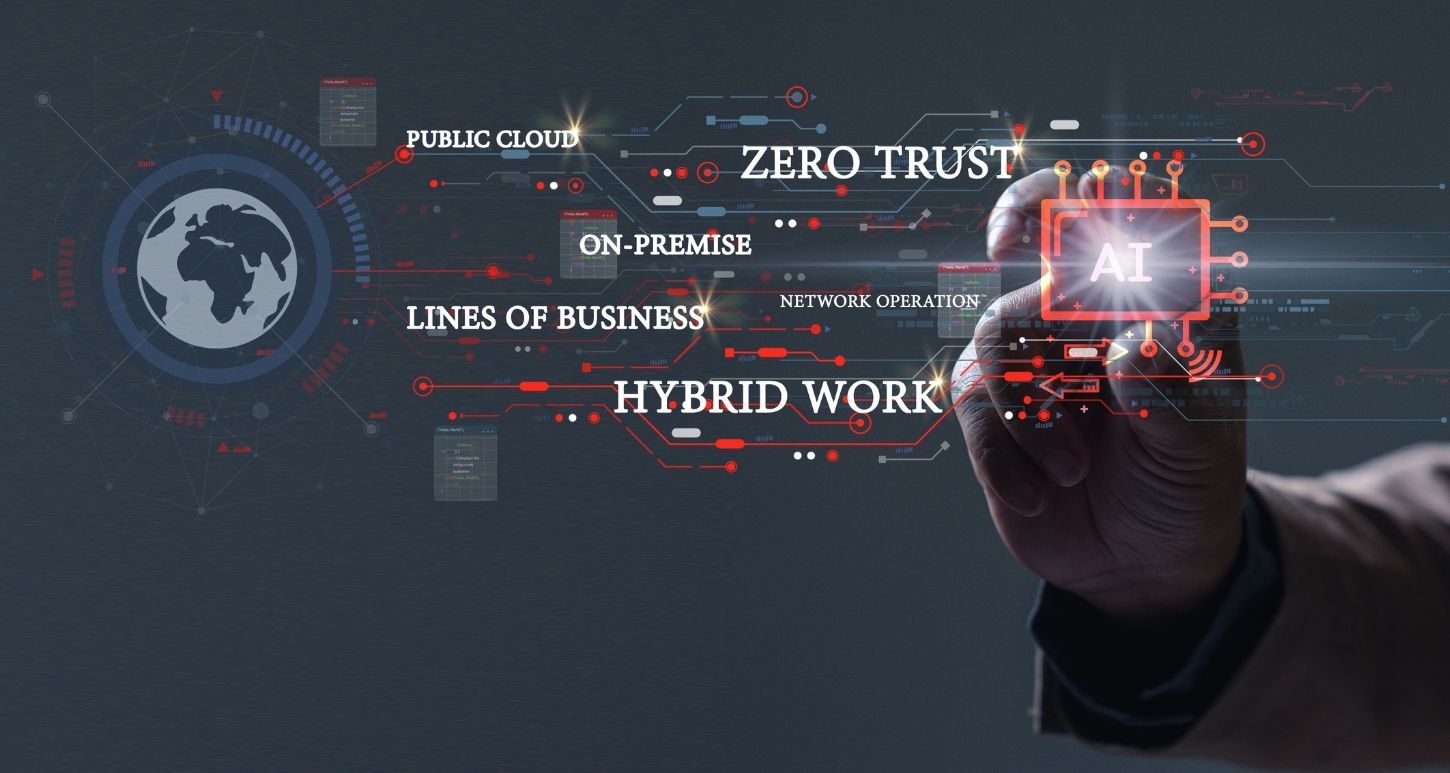Private cloud. Public cloud. Hybrid Cloud. Multicloud. Sometimes we get so caught up in the labels, individual products, and all the “Something-as-a-Service” offerings that we lose sight of the basic principles of cloud computing. These basics are fundamental in your ability to use cloud services to efficiently and effectively conduct business. An estimated 90% of companies utilize these services, but repeatedly, studies have shown that the average business still does not know what capabilities are available to them. To help, below is a brief refresher on the cloud and a discussion around which of the four main cloud environment types could be right for your business.
At the most basic level, the cloud refers to running your workloads, applications, and software not in-house but somewhere else. Generally, these are running on computers not owned by your business, or as it’s jokingly referred to, “someone else’s computer.” The cloud is also distributed, so it’s not in one place or on one server, but rather, it is a network of servers distributed geographically, all functioning as a single ecosystem. One typical advantage is that organizations don’t have to manage their own physical servers and data centers. These basic principles are why the cloud has been such a big topic of discussion in recent months, especially as millions around the world suddenly started working en-masse from home, some for the very first time. However, it can be hard to discern which of the various cloud environments and services is right for any particular business. The following are the four most common types of cloud environments your business will encounter.
Public Cloud
The public cloud is probably the most familiar form of the cloud for most users and the easiest to get started with. “Public” simply means that the cloud is outside of your organization and is a general consumer service. For example, a general consumer service from Apple most iPhone users are familiar with is iCloud. Think of it like a shared service, where multiple users can maintain their private information, but these services are all running on a common provider with a uniform user experience. Public clouds are so widely utilized that they are generally very dynamic, scalable, secure and cost-effective in order to stay popular with consumers. Small businesses like these services because they grant access to massive scale most of those organizations can rarely afford. Unfortunately, because they are a general consumer service, there are any number of options and configuration settings that make it easy for a business to compromise scalability, weaken the default security, and induce unexpected cost overruns. Also, since the service is broadly marketed, there can be limits based on how rigid or not the offerings are defined. But overall, public clouds are a good fit for small businesses, dynamic workloads, born-in-the-cloud offerings, those working their way up the maturity ladder, and enterprises who favor public clouds over other types.
Private Cloud
Traditionally, private clouds are those established within a business and provisioned for the exclusive use by a single organization. Think of your own system infrastructure providing services within your company. However, externally hosted and managed private clouds built and managed offsite by a third party have been growing in popularity. A key difference between the two types of private clouds is who shoulders the burden of management and maintenance of the infrastructure: the organization or a third party? Leveraging a third party frees up resources for a business and increases affordability through economies of scale. Overall, private clouds bring enhanced security compliance, especially for regulated customers, greater configuration flexibility vs. public clouds, and a technology model more like that being used within businesses today. This is frequently offset by additional effort on the part of the user in service design and deployment. As an example, organizations will need to carefully consider the location where the private cloud resides relative to who is using it, and take into account how services will be handled in the event of a disaster. Frequently there is also more advanced planning needed for upgrades and expansion and less of an “on demand” ability to request more resources. Private clouds tend to be favored by larger organizations with well-established workloads they want to >move to the cloud, but some smaller companies may find hosted private clouds to be an option for them, as they combine the control of infrastructure they used to own with reduced responsibilities of management and maintenance.
Hybrid Cloud
Like hosted private cloud, hybrid clouds seek to combine the best of two scenarios, in this case public and private clouds. Typical configurations have a combination of private cloud resources working in concert with public cloud or Software-as-a-Service (SaaS) resources, like Sales or Accounting systems. The goal is to allow an organization to leverage the best of public and private clouds towards a shared end goal. It is ideal for businesses that has data that is sensitive or restricted so must be placed in a private cloud, but have other needs that cater to the public cloud, such as needing to scale dynamically based on time of the year or market demand or to host a public website. Another frequent use for hybrid clouds is to leverage them for disaster recovery scenarios, where data is stored and used on-site, but placed off-site as a backup. This off-site backup can then be activated in an emergency or restored back to on-site as needed. The critical item to consider is that with any mixed-use system, hybrid clouds can take more effort and coordination to manage, as they are servicing more involved needs. This makes them highly suited to large organizations with big problems to solve but tends to be too complex or expensive for smaller organizations.
Multicloud
Like hybrid clouds that combine two or more services to meet the need of an organization, multicloud environments make use of multiple services, combining them into a single common architecture. Within that common architecture, multiple public clouds or SaaS resources are frequently used for different tasks, whereas in a hybrid cloud, all clouds typically operate together for a common business goal. Multiclouds do this to increase capabilities and service flexibility, achieve cost efficiencies by service, while also handling any needs around reducing the dependence on a single provider. One example of separating services is large organizations where different departments have radically different needs, such as Sales and Software Development. In that case different public clouds may be better suited to each workload, allowing the organization to reap the benefits of using the best tool for the task. Multiclouds can also be leveraged when needing to adhere to regional laws and regulations regarding data protection, enabling some data to be stored in a cloud located in that region, while the remainder of the data can be closer to another userbase. Although different, multicloud and hybrid cloud environments can be used in conjunction with each other, allowing for best of breed solutions from each. Therefore, it can at first be hard to tell the difference between them as the two types often blur together. But much like hybrid clouds, multiclouds are a step up in the effort and coordination to architect, build, manage, and maintain. Multiclouds are uniquely suited for the very large organizations, with diverse and complex needs, and frequently are not leveraged by smaller organizations due to their cost.
Though each cloud approach has benefits and drawbacks, the key to implementing the right solution for your business is always knowing your needs, and the best first step is selecting a cloud solution that balances those. GDT’s cloud experts work with you to define your unique needs and then design and deploy a solution that perfectly addresses them. We not only have deep insights and relationships into the various cloud providers and services, including operating a national private commercial cloud and a FedRAMP authorized GovCloud, we also have automation solutions to simplify deployment, migration and management for even the most complex requirements. Whether public cloud, private cloud, hybrid cloud, or multicloud is the right choice for you, GDT will design the perfect solution for your organization.




